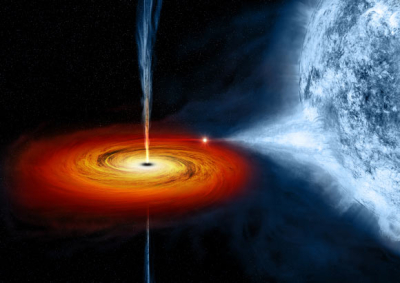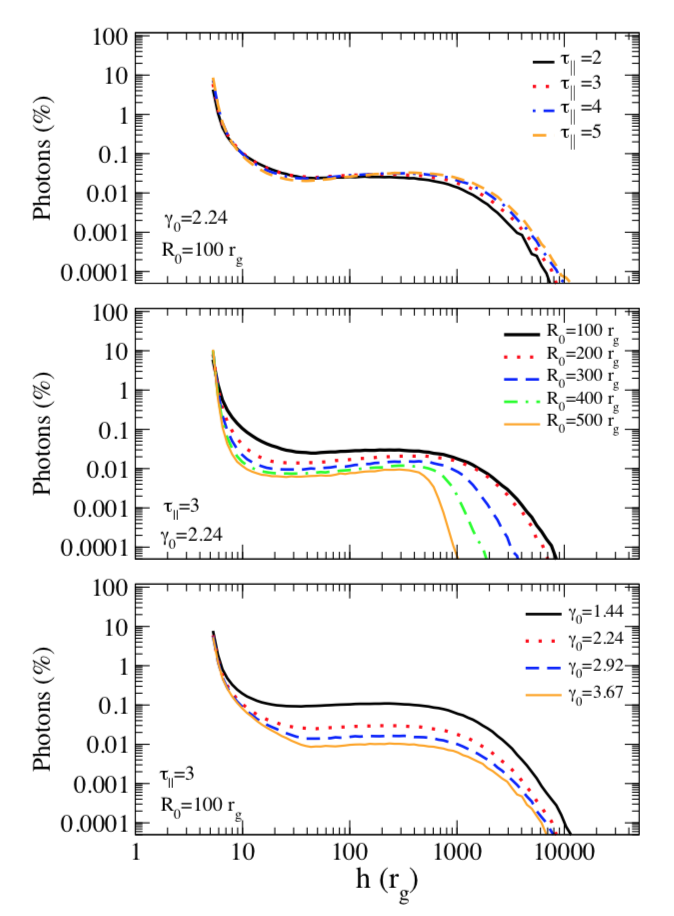The source of hard X-rays in black hole binaries
The models that seek to explain the reflection spectrum in black hole binaries usually invoke a point-like primary source of hard X-rays. This source illuminates the accretion disk and gives rise to the discrete (lines) and continuum-reflected components. Because of the complexity of the physics involved, many authors consider a simple geometry in which the illuminating continuum is assumed to be emitted isotropically from a point source on the rotational axis at certain height above the black hole. This model is known as the lamp post model. However, the lamp post model is an idealized case of the real physical source, which is likely extended, variable, and highly anisotropic.


Constraining the nature and geometry of the source of the hard X-rays that illuminates the disk is of paramount importance because it will allow us to consider more realistic models. It is well-stablished that black holes in binary systems emit powerful jets of matter at relativistic velocities (see figure). Researchers P. Reig and N. Kylafis of the Institute of Astrophysics and University of Crete have recently demonstrated that the jet itself can be indeed the disk-illuminating source.
Using complex numerical methods, they found that, regardless of the optical depth, jet width, and jet velocity, a significant fraction of the Comptonized photons are back-scattered and hit the disk. The majority of photons that hit the disk escape within a few gravitational radii, as expected in the lamp post model. More importantly, there is a significant contribution of photons that escape at larger radii (see figure to the left.).
Article: “Illumination of the accretion disk in black hole binaries: An extended jet as the primary source of hard X-rays”, Reig, P. & Kylafis, N. D. , 2021, A&A, 646, A112 - February 2021
